Lost important Word files? Don’t worry. And here's the truth that will calm your nerves: losing a file doesn't mean it's gone forever. In fact, you can recover DOCX files successfully in most cases. The key is knowing the right steps to take.
Think of this guide as your emergency rescue kit for lost documents. We'll walk you through proven methods to recover Word file data step by step. From simple tricks that take seconds to powerful DOCX recovery tool options, we've got you covered.
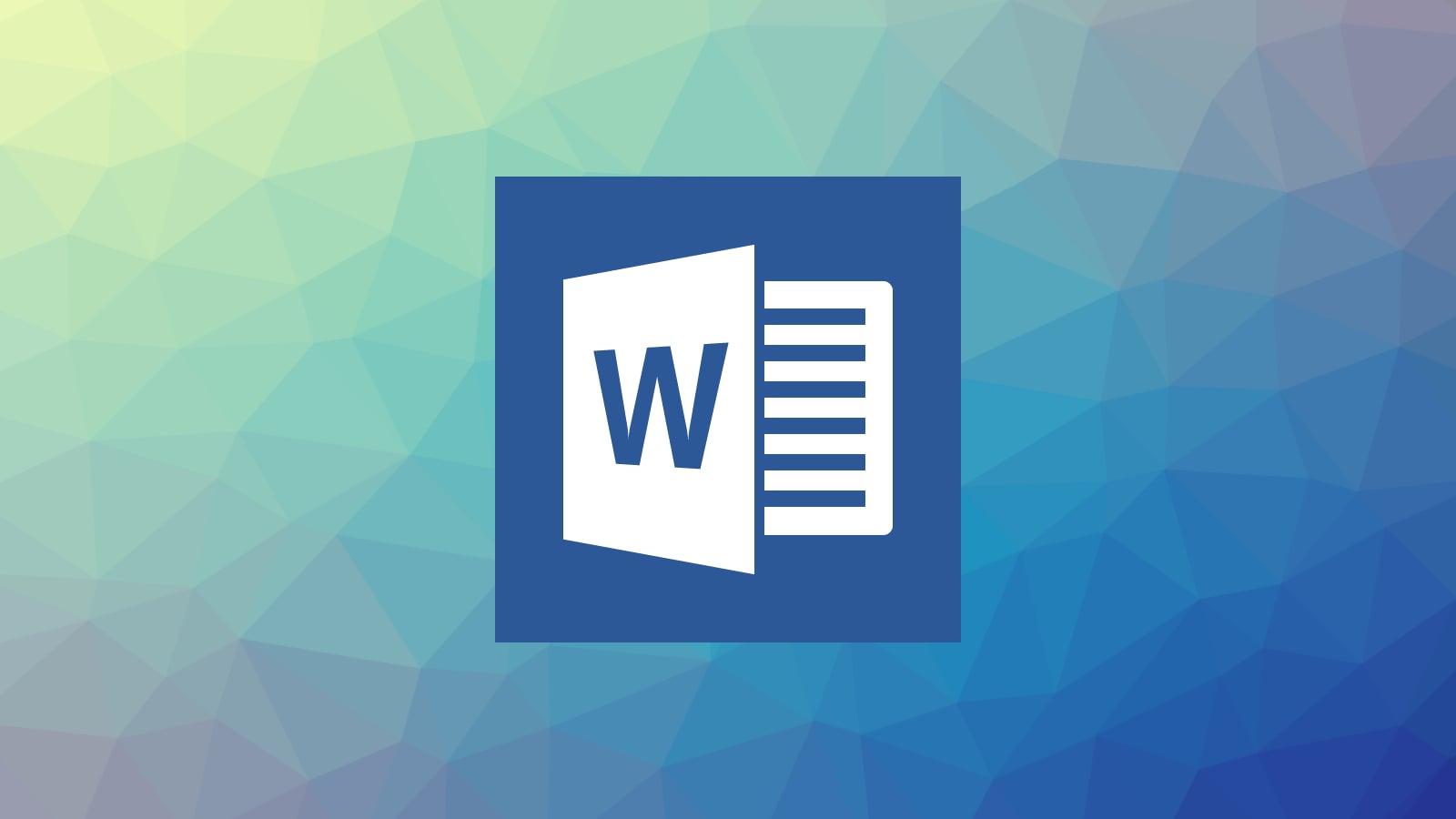
No technical jargon, no complicated procedures. Just clear, actionable solutions that actually work. Ready to become a document recovery expert?
Try Recoverit to Recover DOCX Files
Security Verified. Over 7,302,189 people have downloaded it.
In this article
Part 1: What is DOC and DOCX File: What is the Difference
What is DOC and DOCX format? Microsoft Word supports two file formats: DOC and DOCX. While both are used for storing text documents, they operate differently. DOC, the older format, dates back to early versions of Word, whereas DOCX is the newer, more sophisticated standard.
Knowing the DOCX format can help in selecting better recovery methods. DOCX files are essentially zip folders containing XML data, making them easier to repair if they become damaged. In contrast, DOC files use a binary structure, which is more difficult to fix.
| Feature | DOC Format | DOCX Format |
| File Size | Larger files | Smaller files |
| Compatibility | Older Word versions | Word 2007 and newer |
| Recovery Rate | Lower success rate | Higher success rate |
| File Structure | Binary format | XML-based format |
| Corruption Risk | Higher risk | Lower risk |
| Speed | Slower to open | Faster to open |
Part 2: Why Do DOC Files Get Deleted?
Document loss happens for many reasons. Understanding these causes helps prevent future problems. When you know why files disappear, you can take better care of your documents.
Here are the main reasons why documents get lost:
- Accidental deletion - You delete files by mistake while cleaning folders
- Hard drive failure - Your storage device stops working properly
- Virus attacks - Malware corrupts or deletes your important files
- Power outages - Sudden shutdowns can corrupt open documents
- Human error - Moving files to wrong locations or overwriting them
- System updates - OS updates sometimes cause file system problems
- Storage device damage - Physical damage to USB drives or hard disks
Part 3: Is it Possible to Recover Word File?
Word file recovery is often possible, but the success rate depends on how long ago the files were lost and the cause of the deletion. Newly deleted files have a higher chance of recovery compared to older ones.
Deleting a file doesn't immediately erase it. Instead, the system designates its storage space as available for new data. Until another file overwrites that space, the document remains recoverable. Acting swiftly increases your chances of retrieval, while delays make recovery more challenging.
Part 4: How to Recover DOCX File Easily
Method 1: Use Recoverit to Recover Word file
Recoverit is a powerful DOCX recovery tool that works well for most users. This software can find deleted files from various storage devices. It supports many file formats including DOC and DOCX. The program has a simple interface that beginners can use easily.
The software performs a thorough scan of your entire drive to locate lost documents, including DOCX files, even from formatted drives. Recoverit also provides a preview of recoverable files before restoration, allowing you to select the correct documents for recovery.
This DOCX recovery tool works on both Windows and Mac computers. It can recover files from internal drives, USB sticks, and memory cards. The success rate is high of up to 99.5%.
Steps to use Recoverit:
- Download and install Recoverit on your computer. Launch Recoverit. Select the drive. Click "Start" to begin scanning for deleted DOCX files.
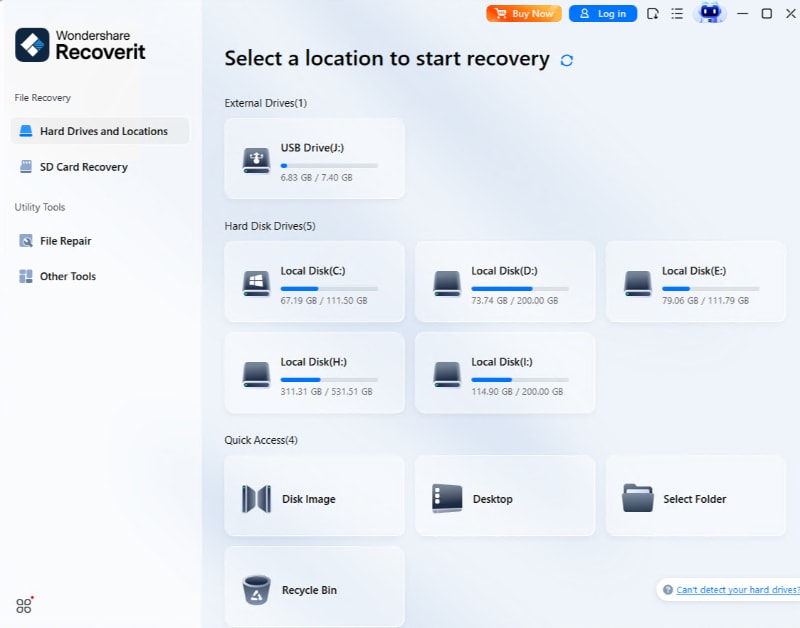
- Wait for the scan to complete. Preview the found DOCX files to verify they're intact.
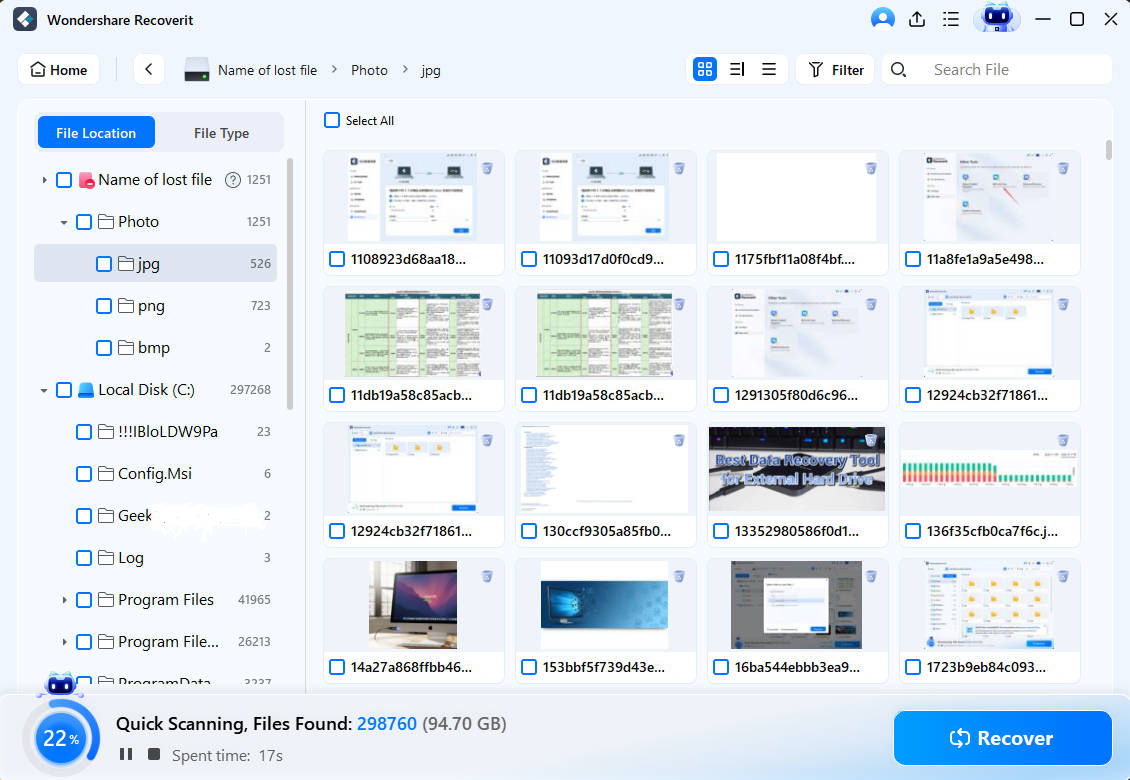
- Select the files you want to restore. Save the recovered documents. Click "Recover" to restore your DOCX files.

Video Tutorial: How to Recover Lost DOCX?
Method 2: Use AutoRecover in Microsoft Word
AutoRecover in Microsoft Word automatically saves your work at regular intervals. If Word crashes, it helps restore recent changes. It runs in the background while you type.
Every few minutes, AutoRecover creates backup copies, storing them in a special folder on your computer. After a crash, Word offers to restore these files. This works best for recovering unsaved work.
You can adjust AutoRecover settings to save more often, reducing the risk of data loss. However, it only helps with unsaved changes, not deleted files.
Steps to use AutoRecover:
- Open Microsoft Word on your computer. Go to the File. Click "Options". Select "Save" from the left sidebar. Check if "Save AutoRecover information" is enabled.
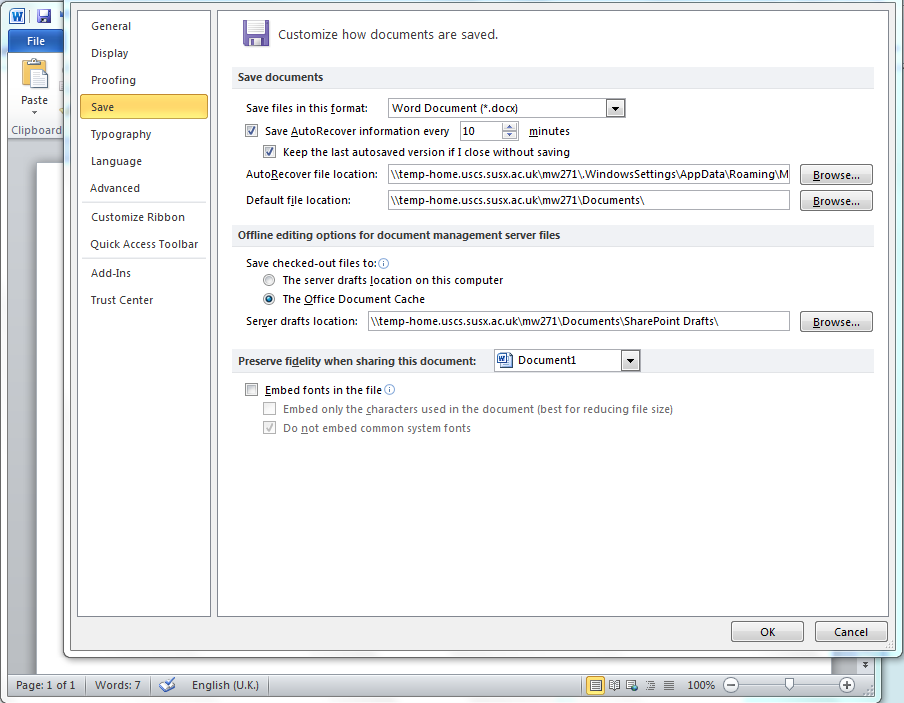
- Locate the AutoRecover file path. Close Word. Go to that folder. Find files with the .asd extension, double-click to open them in Word, and save the recovered document under a new name.
Method 3: Check the Recycle Bin
The Recycle Bin is the most convenient location for retrieving deleted DOCX files. When a file is deleted, it typically moves there first, making recovery simple. Files remain in the Recycle Bin for a designated period before being permanently erased.
Checking the Recycle Bin is quick and free, making it the first step in file recovery. However, files deleted with Shift+Delete or from external drives may not appear there, requiring other recovery methods.
Steps to check Recycle Bin:
- Double-click the Recycle Bin icon on your desktop. Look through the list of deleted files. Right-click on the Word file. Select "Restore" from the context menu.
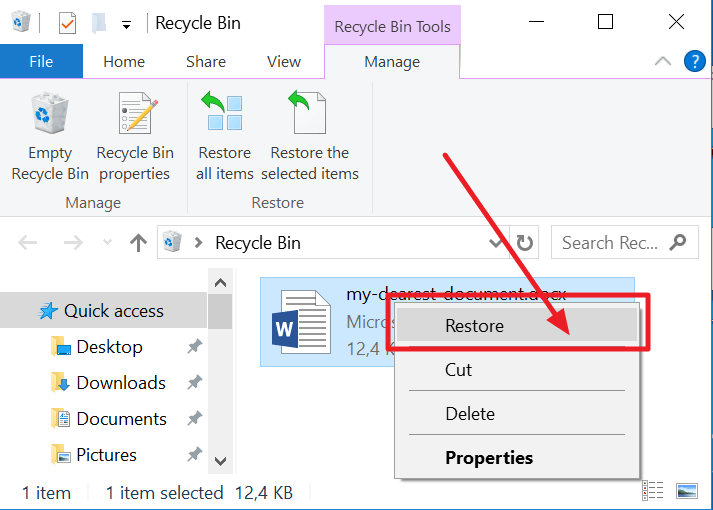
- The file will return to its original location. Check the original folder to confirm restoration. Open the file to verify it works properly
Method 4: Search for Temporary Files
Microsoft Word creates temporary files while you work on documents. These temp files can help you recover Word file content when originals are lost. Word makes these files automatically during editing sessions. They usually have strange names with tildes (~) at the beginning.
Temporary files get stored in specific folders on your system. Windows and Mac have different locations for these files. The files might contain recent changes to your documents. Sometimes these temp files are more recent than your saved versions.
Temp files usually get deleted when you close Word normally. But crashes and unexpected shutdowns can leave these files behind. This makes them useful for recovery purposes.
Steps to find temporary files:
- Press Windows key + R to open Run dialog. Type "%temp%" and press Enter. Look for files starting with "~" or containing "Word".
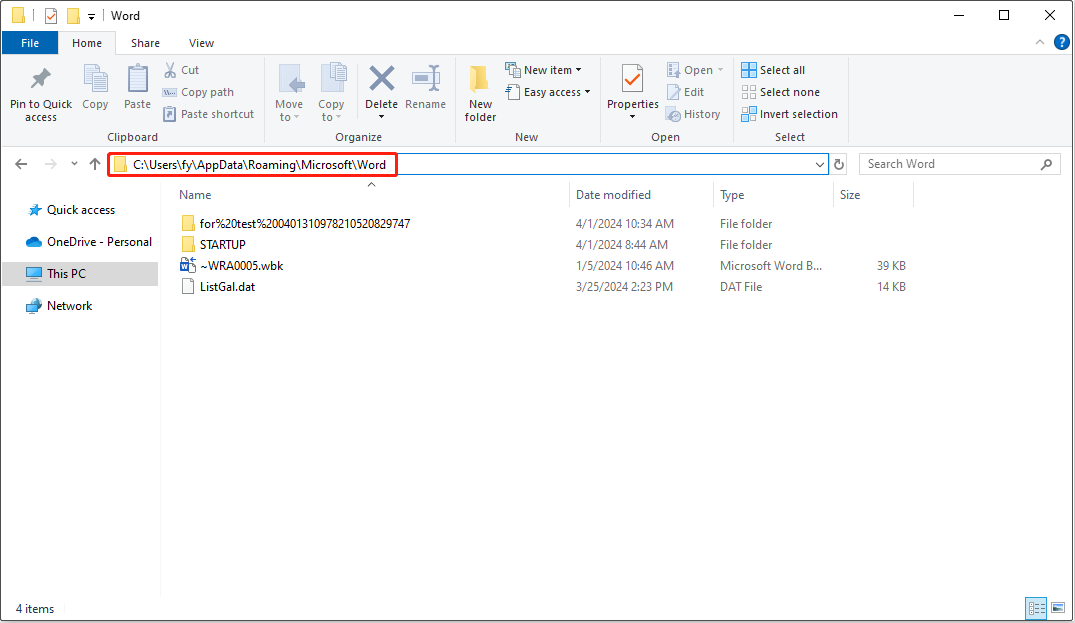
- Try opening suspicious files with Word. Also check C:\Users[Username]\AppData\Roaming\Microsoft\Word
Copy any recovered content to a new document
Method 5: Restore from Previous Versions
Windows keeps automatic backups of your files through System Restore points. This feature can help you recover DOCX files from earlier dates. Previous Versions shows snapshots of folders from different times. You can browse these snapshots to find lost documents.
This method works well if you had System Protection enabled. Windows creates restore points automatically during system changes. Each restore point includes file system snapshots. You can access these snapshots through file properties.
The success of this method depends on your system settings. Some computers have this feature disabled by default. Also, restore points get deleted over time to save space.
Steps to restore from Previous Versions:
- Navigate to the folder that contained your DOCX file. Right-click on the folder and select "Properties". Click on the "Previous Versions" tab. Look for available restore points with different dates.
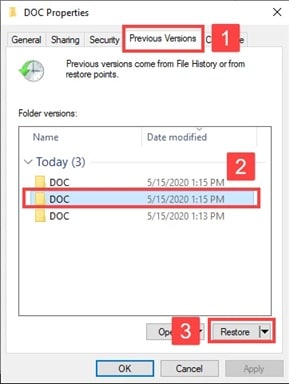
- Select a restore point from before the file was lost. Click "Open" to browse that version of the folder. Copy the recovered DOCX file to a safe location. Verify the file opens correctly in Word
Method 6: Check Microsoft Word Backup Files
Microsoft Word can create automatic backup copies of your documents. This feature saves a backup version every time you save the original. Backup files have .wbk extension and get stored in the same folder. This gives you two copies of each important document.
You need to enable the backup feature in Word settings. By default, this feature is turned off in most installations. Once enabled, Word creates backups automatically. The backup file contains the previous version of your document.
These backup files can help when your main document gets corrupted or deleted. They provide an older but working version of your content. This DOCX recovery tool approach works best for important documents.
Steps to find Word backup files:
- Navigate to the folder containing your original DOCX file. Look for files with the same name but .wbk extension. If not found, search your entire computer for .wbk files. Double-click the .wbk file to open it in Word.
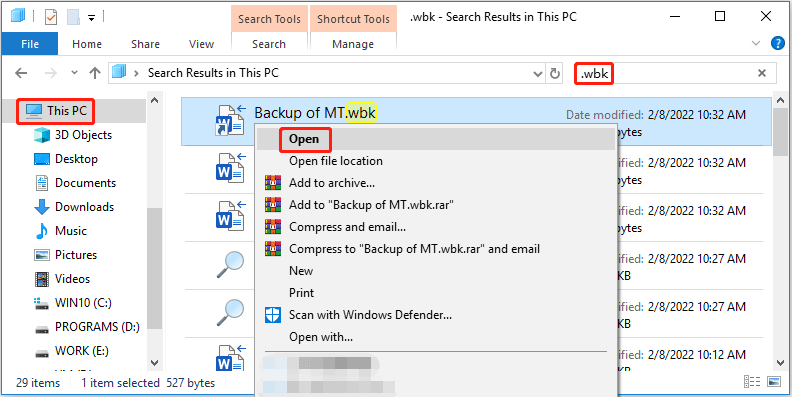
- Go to File > Options > Advanced in Word. Scroll down to the "Save" section. Check "Always create backup copy" for future protection. Save the recovered content as a new DOCX file
Part 5: Tips to Recover Word File Without Any Hassle
Prevention is better than cure when it comes to document recovery. Following good practices can save you from future headaches. These tips will help you avoid losing important DOCX files in the first place.
Here are essential tips for smooth document recovery:
- Enable AutoSave - Turn on automatic saving in Word settings to prevent loss
- Create regular backups - Copy important files to external drives or cloud storage
- Use version control - Keep multiple versions of important documents
- Avoid force-closing Word - Always close the program properly to prevent corruption
- Check antivirus settings - Make sure your security software doesn't delete Word files
- Update Word regularly - Newer versions have better recovery features
- Save work frequently - Use Ctrl+S often to save your progress
- Use cloud storage - Services like OneDrive provide automatic backup and sync
Conclusion
Losing DOCX files doesn't have to be a disaster. Multiple recovery methods can help you get your documents back. Start with simple solutions like checking the Recycle Bin. Then move to more advanced methods if needed. DOCX recovery tool software provides the highest success rates for severely lost files.
Remember that quick action improves your recovery chances significantly. Don't save new files to the same drive until recovery is complete. This prevents overwriting your lost data. With the right approach, you can recover DOCX file content successfully. Prevention through regular backups remains the best protection against future data loss.
Try Recoverit to Recover Lost/Unsaved DOCX Files
Security Verified. Over 7,302,189 people have downloaded it.
FAQ
-
Q: Can I recover DOCX file online without downloading software?
Yes, you can recover DOCX file online using web-based recovery services. Several websites offer online file recovery tools that work through your browser. However, online tools have limitations compared to desktop software. They work best for corrupted files rather than deleted ones. For completely deleted files, desktop recovery software usually provides better results. Online recovery also raises privacy concerns since you upload sensitive documents to third-party servers. -
Q: What makes DOCX files easier to recover than DOC files?
What is DOCX file structure makes it more recoverable than older DOC format. DOCX files use XML-based format stored in ZIP containers, making them less prone to corruption. When a DOCX file gets partially damaged, recovery tools can often extract readable content from undamaged sections. DOC files use binary format, which becomes completely unreadable when corrupted. The newer DOCX format also has better error handling and recovery features built into Microsoft Word itself. -
Q: How long do I have to recover deleted DOCX files before they're gone forever?
The timeframe to recover Word file content depends on your computer usage patterns. Deleted files remain recoverable until new data overwrites them on the storage device. On actively used computers, this might be just a few hours or days. On less active systems, files might remain recoverable for weeks or months. SSDs overwrite data faster than traditional hard drives due to wear leveling. To maximize recovery chances, stop using the affected drive immediately and run recovery software as soon as possible.


 ChatGPT
ChatGPT
 Perplexity
Perplexity
 Google AI Mode
Google AI Mode
 Grok
Grok























